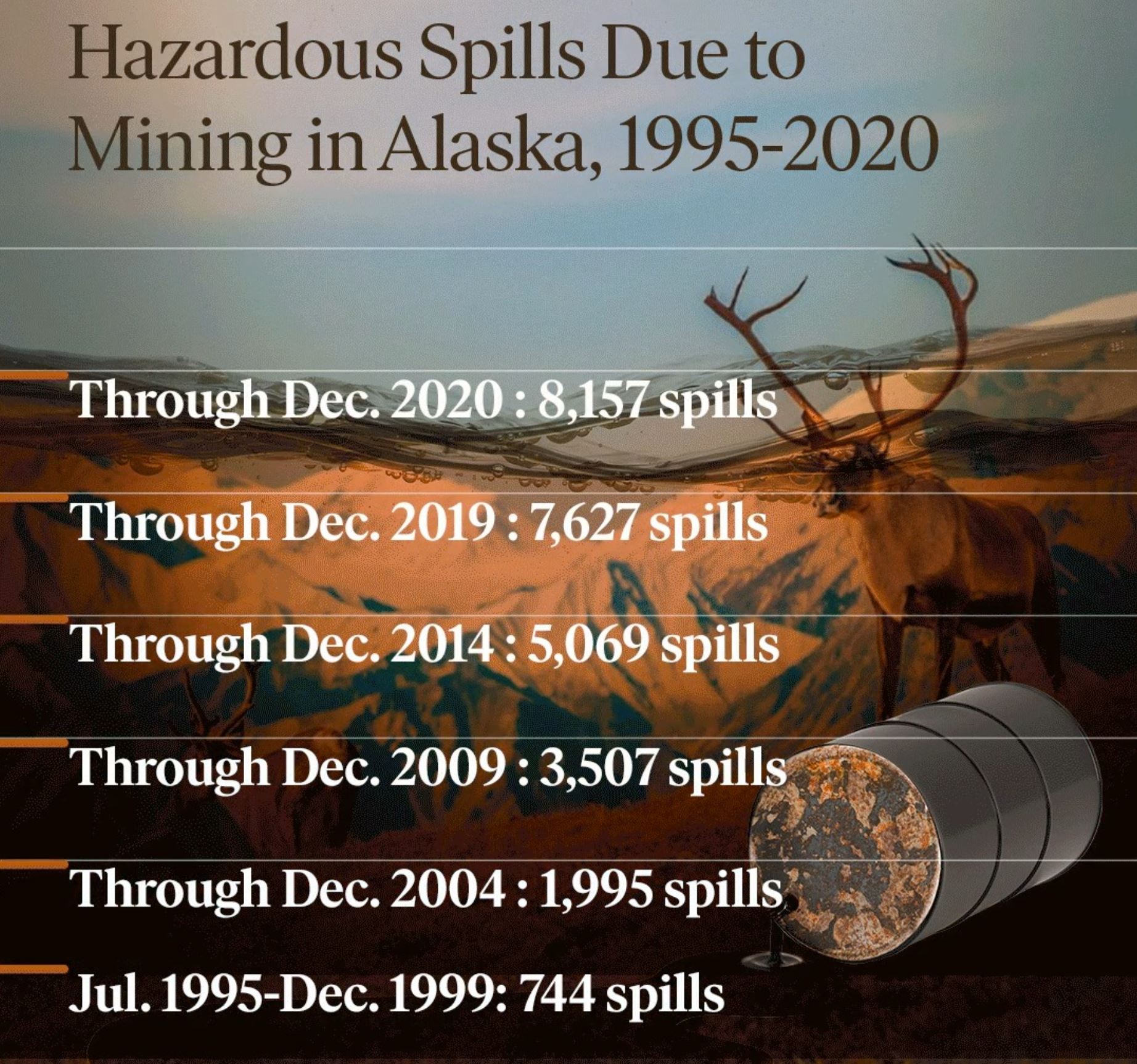
Between a rock and a hard place: Pushing for “green energy” mining could replace one catastrophe with another
By Dawnell Smith
Clean energy is in the air these days—in the sun, the wind, the water, and the forces and cycles of nature that have always run things around here.

Decision-makers, lobbyists, and public relations teams that once undermined climate action and green energy have now seen the light—or rather the cash—of exploiting the call for electric vehicles, solar panels, wind turbines and other technologies to pursue extraction projects that would do severe harm to land, water, and communities.
Yes, the fossil fuel industry’s devastating impacts on the planet have compelled action, at last, and also the push for industrialization continues. We need to be sure not to fall for the same old tropes.
In this and a series of articles posted in the months to come, we want to take a hard look at mining in Alaska and unpack what it means for Alaskans and Alaska’s future.
Amassing energy around justice
We absolutely need to transition to clean, renewable, sustainable, and locally managed energy sources, to replace fossil fuels that emit large quantities of greenhouse gases like carbon and methane. We also need to innovate and embrace all options rather than buy into the false choices of industrialists who view Alaska as a place to take from and leave behind.

Any climate “solution” that turns some places and communities into sacrifice zones in the name of “progress” is not a solution, it’s an injustice. Any “green energy” action that forces communities and future generations to pay the consequences of exploitation is not national security, but a national tragedy.
And any “solution” that uses the promise of jobs as a carrot is not an economic driver, but an economic dead end that has and will take wealth out of Alaska while leaving Alaskans with the burden of mining waste, toxins that affect animal and human health, the violence and social impacts of industrial camps near local communities, and much more.
A recent report on mines in Alaska shows that mining spills do not only regularly happen, but that they’re woefully underreported and underestimated in mining permit applications. Another report shows the viability and advantage of supporting electric vehicles without new mining.
Using an adjective before “mining” doesn’t make it clean or just
When industry folks and politicians talk about “responsible” or “safe” or “secure” mining, they don’t say what that means, precisely because those adjectives are meaningless marketing ploys, not obligations or real accountability. Adjectives that make something sound better don’t protect people, fish, caribou, or the biodiversity required to sustain healthy communities and a healthy planet. Truth is, hardrock mining and the means to reduce pollution from mining have not changed in decades.
The mining law ruling the country right now was signed by Ulysses Grant to promote westward expansion and the colonial project in 1872. You heard that right—a law passed when massive industrial mining didn’t exist, passed for the precise purpose of creating a mining subsidy free-for-all, still governs mining projects on federal lands today.

While the mining laws covering Alaska state lands are somewhat newer, they still allow the extraction of metals and minerals from public lands, and they still don’t pay their way by a long shot. These mining operations self-guarantee their inadequate bonds for clean-up, and they never lead to meaningful restoration of the land, water, and ecosystem health that they harm.
The law fails on every level to handle the “mine no matter the cost” ethos being pushed by industry and some politicians right now, but it’s only one of many factors Alaskans need to pay attention to as political and industry players press agencies to approve mining projects.
Challenges and choices
The good news is that people around the world have already done a lot of work to outline what it looks like when the need for critical minerals for green energy aligns with what’s just and healthy for communities.

People throughout Alaska are working on what transitioning to clean energy and economies of care looks like when there’s community involvement in solutions that put people first as full human beings.
Next month and in the months to come, we will look at the specific challenges and choices facing Alaskans around mining. In our series, “Between a rock and a hard place,” we’ll talk about mining impacts and alternative sources of metals and minerals. We’ll talk about what people are doing in Alaska to protect their communities from current and upcoming mining proposals. We’ll talk about the laws and agency processes around mining and our legal fights.
From the Ambler road proposal to subsidize international mining operations in the Arctic, to the proposed Pebble mine at the headwaters of Bristol Bay’s thriving salmon fishery, to other mining proposals now being shaped behind closed doors, the push for more and easier mining will surely shape Alaska’s health and future.


